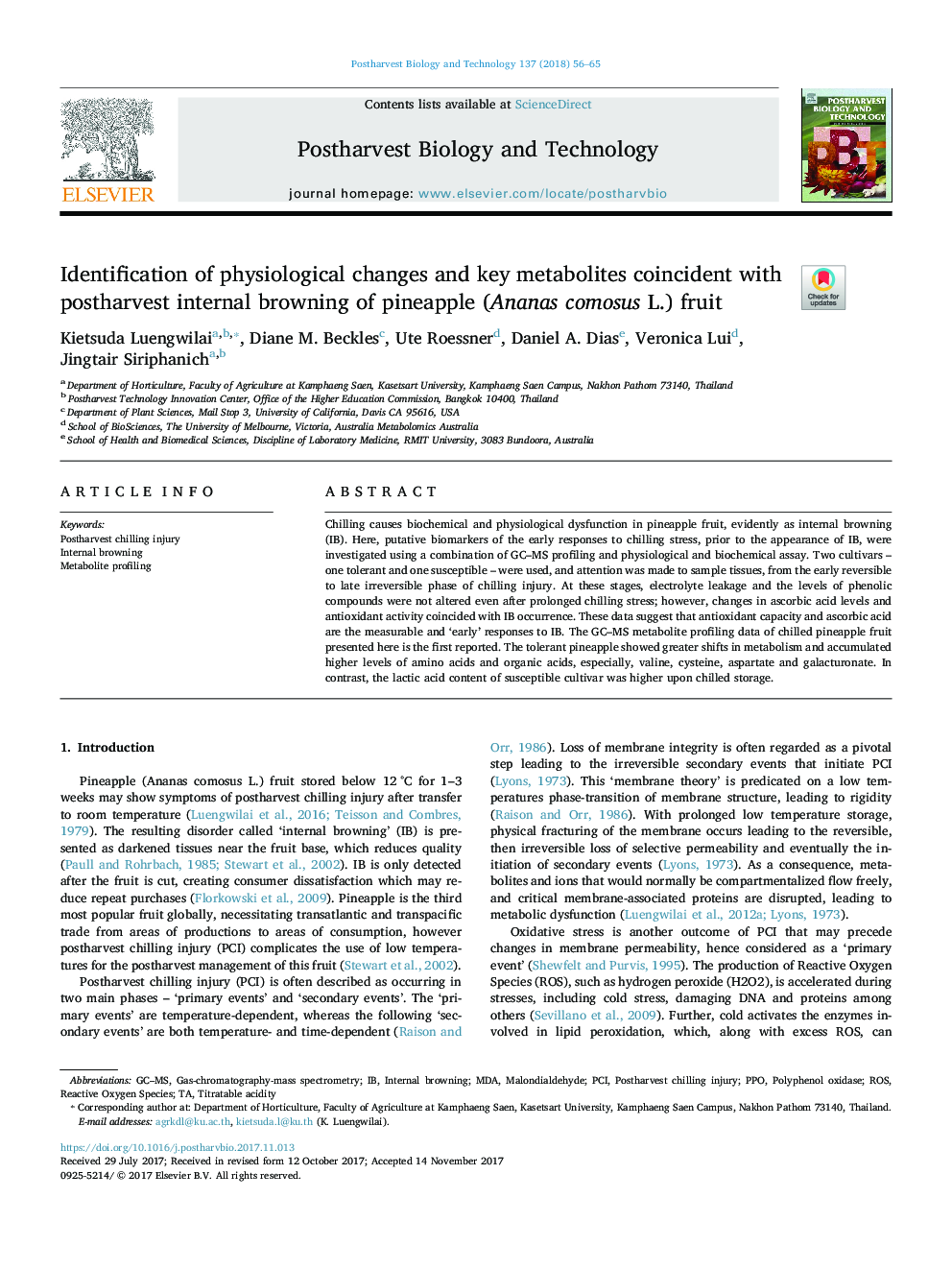| Article ID | Journal | Published Year | Pages | File Type |
|---|---|---|---|---|
| 8882019 | Postharvest Biology and Technology | 2018 | 10 Pages |
Abstract
Chilling causes biochemical and physiological dysfunction in pineapple fruit, evidently as internal browning (IB). Here, putative biomarkers of the early responses to chilling stress, prior to the appearance of IB, were investigated using a combination of GC-MS profiling and physiological and biochemical assay. Two cultivars - one tolerant and one susceptible - were used, and attention was made to tissue sampling from the early reversible to late irreversible phase of chilling injury. At these stages, electrolyte leakage and the levels of phenolic compounds were not altered even after prolonged chilling stress; however, changes in ascorbic acid levels and antioxidant activity coincided with IB occurrence. These data suggest that antioxidant capacity and ascorbic acid are the measurable and 'early' responses to IB. The GC-MS metabolite profiling data of chilled pineapple fruit presented here is the first reported. The tolerant pineapple showed greater shifts in metabolism and accumulated higher levels of amino acids and organic acids, especially, valine, cysteine, aspartate and galacturonate. In contrast, the lactic acid content of susceptible cultivar was higher upon chilled storage.
Related Topics
Life Sciences
Agricultural and Biological Sciences
Agronomy and Crop Science
Authors
Kietsuda Luengwilai, Diane M. Beckles, Ute Roessner, Daniel A. Dias, Veronica Lui, Jingtair Siriphanich,
